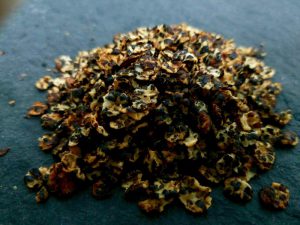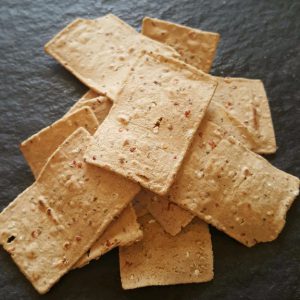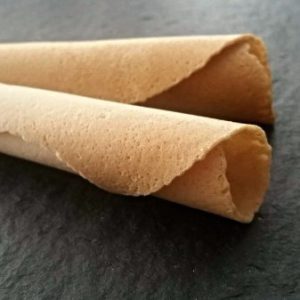Sorghum: The Quinoa Of Africa
More than 500 million people in over 30 countries include sorghum in their diet, but history shows that it slowly spread to took hold throughout the world. Traces of sorghum have been found at the Nabta Playa archaeological site in southern Egypt, that dated back 8000 BC*. Sorghum has traveled the world, from Africa to India over 2,000 years ago, and overland from India to China along the silk route around 2,000 years ago.
Sorghum was first introduced to the United States from West Africa at least two centuries ago. Benjamin Franklin brought a variety of sorghum known as “broomcorn” from England, which has been used to make brooms and brushes for centuries. Other varieties of sorghum found their way to the Atlantic coast in the 1800s. Grown for it’s sugary stalks that are then crushed into syrup, a sweet variety spread widely in the south during the British sugar tariffs of the late 1800’s. Other grain varieties of sorghum made their way west to the drier regions of the US, as they were better suited to that climate.
Nu Life market founder, Earl Roemer, recognized the potential of heritage varieties of sorghum in the 90s. Black sorghum, which is gluten free and has 8 times more antioxidant value than blueberries, was discovered in the mountainous regions of Ethiopia. The plains of Sudan gave us burgundy sorghum, which has tannins and therefore health benefits similar to that of red wine. Today, Nu Life offers many different types of sorghum grown at Earl’s farms in the midwest that bring exceptional nutrition to the US market through an ancient grain with a unique history.
Have You Met Earl?
 Consumers are now demanding more information about their food than ever before. One way to add value that actually increases brand loyalty is by featuring traceable ingredients. And, what’s more powerful than showing the farmer and the land where your sorghum was grown? With 10,000 of our acres within a 20 mile radius, Nu Life has already hosted four video crews to film harvest. So whatever you purchase; black, popped, waxy or white, we’ve got land nearby available to film. If your team is unable to visit–recommendations can be made for nearby filming or Nu Life also has photos available for use. But hurry, this is the last week for harvest!
Consumers are now demanding more information about their food than ever before. One way to add value that actually increases brand loyalty is by featuring traceable ingredients. And, what’s more powerful than showing the farmer and the land where your sorghum was grown? With 10,000 of our acres within a 20 mile radius, Nu Life has already hosted four video crews to film harvest. So whatever you purchase; black, popped, waxy or white, we’ve got land nearby available to film. If your team is unable to visit–recommendations can be made for nearby filming or Nu Life also has photos available for use. But hurry, this is the last week for harvest!
VOGUE: SORGHUM, THE NEW QUINOA!
But unlike some good-for-you grains, it’s actually good—from its pleasing size and shape (similar to Israeli couscous) to its unique mouthfeel (an almost powdery, al dente quality). VOGUE
Sorghum Harvest 2016:
 This year’s sorghum harvest is off to a terrific start. Dry winds have helped speed up cutting and grain is coming in earlier than expected. The dry weather has created ideal moisture levels. Last year cutting didn’t start until Nov and harvest wasn’t complete until well into December. This year harvest will be complete by the end of this week. IP varieties are producing outstanding grain quality and the grain chemistry is some of the best we’ve seen in years. If you haven’t done so already, now is the second best* time to contract your volume for our strongest price.
This year’s sorghum harvest is off to a terrific start. Dry winds have helped speed up cutting and grain is coming in earlier than expected. The dry weather has created ideal moisture levels. Last year cutting didn’t start until Nov and harvest wasn’t complete until well into December. This year harvest will be complete by the end of this week. IP varieties are producing outstanding grain quality and the grain chemistry is some of the best we’ve seen in years. If you haven’t done so already, now is the second best* time to contract your volume for our strongest price.
*our best time to contract is during planting (early spring).
How To Keep Your Sorghum From A Recall:
Due to a strong dollar and record production, soy, wheat and corn are being stocked piled at record rates. Exports are down and elevators are awash in GMO corn, soybeans, and gluten containing wheat –multiplying the opportunity for contamination.
 Conditions are ripe for trouble—elevators have no place to put grain and have been forced to store grain on the ground. Other sorghum companies are purchasing sorghum on the open market without visiting storage facilities or elevators creating a strong contamination opportunity, especially with this years surplus of wheat, corn and soy.
Conditions are ripe for trouble—elevators have no place to put grain and have been forced to store grain on the ground. Other sorghum companies are purchasing sorghum on the open market without visiting storage facilities or elevators creating a strong contamination opportunity, especially with this years surplus of wheat, corn and soy.
Only Nu Life is completely vertically integrated and plants its own fields. Our seed, grain, and bins never see corn, soy, or wheat. Our sorghum is treated with a fanatical focus on safety and quality. Due to the contamination risk this year, make sure you’re suppliers are vertically integrated. An ounce of prevention is worth a pound of cure-Ben Franklin.
If you’d like more information on our Farm to Family Safety program, or what questions to ask your supplier —just ask!
Black Sorghum Crisp
 Black sorghum with more protein than quinoa, more antioxidants than blueberries and grown right here in the US–why formulate with a boring rice or soy crisp? Add a nutrition boost and consumer intrigue to your next product. Samples Available
Black sorghum with more protein than quinoa, more antioxidants than blueberries and grown right here in the US–why formulate with a boring rice or soy crisp? Add a nutrition boost and consumer intrigue to your next product. Samples Available
Sorghum: Ancient Pre-Biotic
Research by Dr. Turner, Research Professor for the Department of Nutrition and Food Science at Texas A&M University, has shown that sorghum brans containing polyphenols, such as black and sumac, are capable of modifying the microbiota in a manner that supports intestinal health. Dr. Turner’s research shows that polyphenol-enriched sorghum bran can contribute toward the suppression of several chronic diseases. The high phenolic content and antioxidant properties of sorghum bran also inhibit protein glycation, which may affect critical biological processes that are important in diabetes and insulin resistance.
Chronic disease levels are rising in the US, with more cases of heart disease, diabetes, and obesity diagnosed every year. Gut health is one of the top health trends of 2016, and consumer interest continues to grow.
More information on available sorghum research, and full research reports, here.


Have A Project That Needs Support?
Our team of food scientists and cereal chemists can help with your toughest challenge. From baked goods to pasta, we have experience with solving unique development issues. We may know all the answers, but we guarantee to know someone who does!
